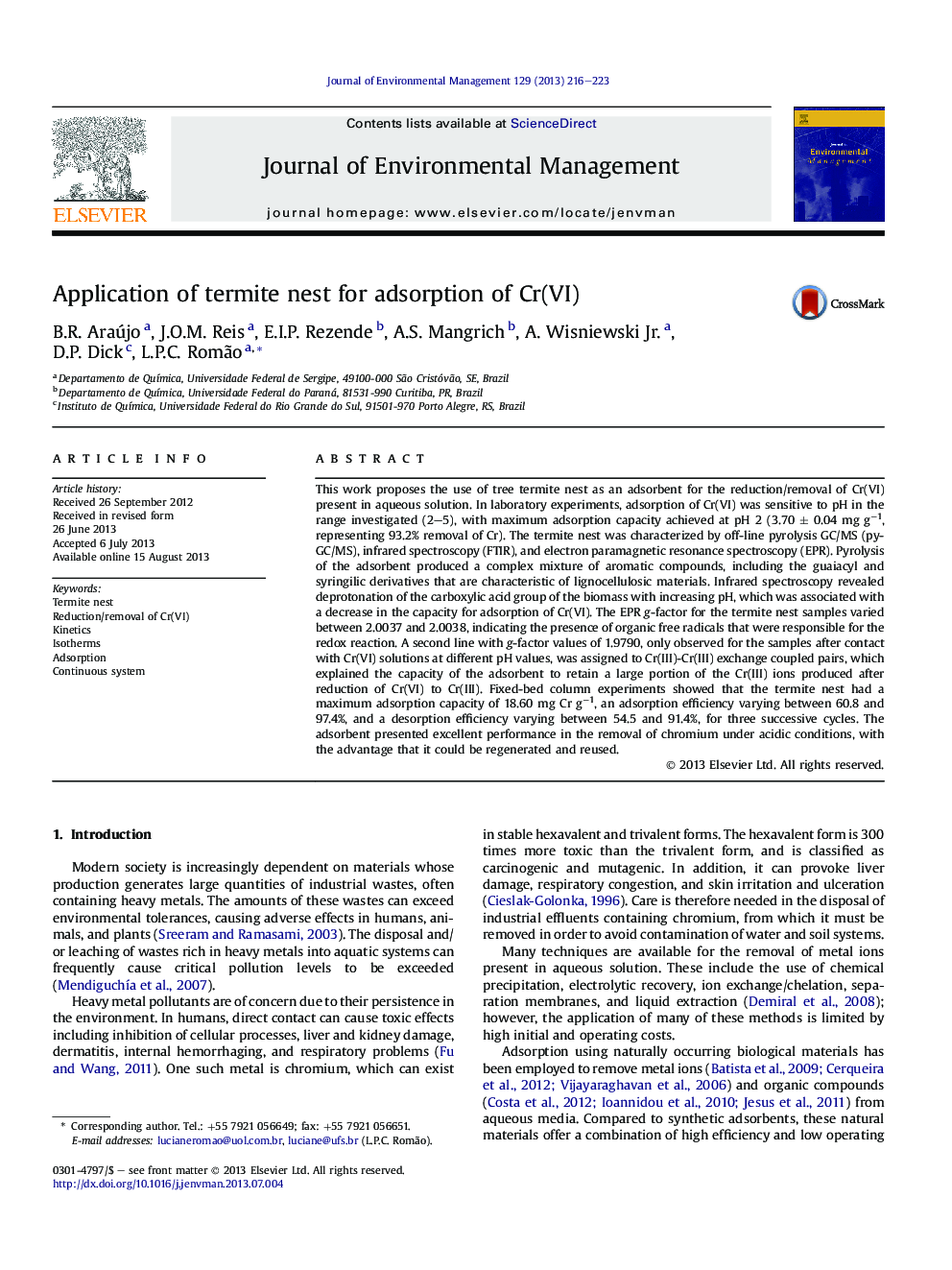| Article ID | Journal | Published Year | Pages | File Type |
|---|---|---|---|---|
| 1056163 | Journal of Environmental Management | 2013 | 8 Pages |
•The EPR g-factor indicated that organic free radicals were responsible for the redox reaction.•Acidic conditions are necessary for the effective reduction/removal of Cr(VI).•Reduction of Cr(VI) to Cr(III) increases chromium removal rates.•Termite nest is highly effective for removal of chromium in aqueous solution.
This work proposes the use of tree termite nest as an adsorbent for the reduction/removal of Cr(VI) present in aqueous solution. In laboratory experiments, adsorption of Cr(VI) was sensitive to pH in the range investigated (2–5), with maximum adsorption capacity achieved at pH 2 (3.70 ± 0.04 mg g−1, representing 93.2% removal of Cr). The termite nest was characterized by off-line pyrolysis GC/MS (py-GC/MS), infrared spectroscopy (FTIR), and electron paramagnetic resonance spectroscopy (EPR). Pyrolysis of the adsorbent produced a complex mixture of aromatic compounds, including the guaiacyl and syringilic derivatives that are characteristic of lignocellulosic materials. Infrared spectroscopy revealed deprotonation of the carboxylic acid group of the biomass with increasing pH, which was associated with a decrease in the capacity for adsorption of Cr(VI). The EPR g-factor for the termite nest samples varied between 2.0037 and 2.0038, indicating the presence of organic free radicals that were responsible for the redox reaction. A second line with g-factor values of 1.9790, only observed for the samples after contact with Cr(VI) solutions at different pH values, was assigned to Cr(III)-Cr(III) exchange coupled pairs, which explained the capacity of the adsorbent to retain a large portion of the Cr(III) ions produced after reduction of Cr(VI) to Cr(III). Fixed-bed column experiments showed that the termite nest had a maximum adsorption capacity of 18.60 mg Cr g−1, an adsorption efficiency varying between 60.8 and 97.4%, and a desorption efficiency varying between 54.5 and 91.4%, for three successive cycles. The adsorbent presented excellent performance in the removal of chromium under acidic conditions, with the advantage that it could be regenerated and reused.
